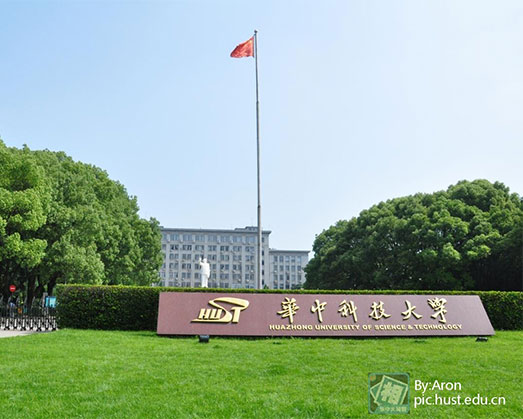Universities: Leaders or Followers?
This began in earnest 14 years ago, linked to a broader array of policies intended to open up portions of China’s economy and institutions to market forces.
Before a large audience gathered to celebrate Peking University’s 100th anniversary in 1998, China’s then president Jiang Zemin set a goal to reform and expand its universities. China’s atrophied university sector generated only about 200,000 graduates a year, virtually all at the first-degree level and mostly absent from graduate programmes.
Since then, tertiary enrolment has more than tripled and produced some 6.3 million graduates and some 3,000 institutions. With more than 29 million students, China has the largest higher education enrolment in the world. In 2010, approximately 24% of the traditional age cohort of 18- to 24-year-olds were enrolled in higher education.
But the ambitions of the national government during and since Jiang’s presidency were not only limited to quantitative growth in enrolment. In the past decade, China has increasingly focused on the quality of its vast collection of national and provincial universities and, specifically, how they can help build China into a more knowledge-based economy.
This desire has generated a series of national government policies, beginning with the 985 Project (launched in 1998), intended to develop a group of globally competitive institutions, and more recently expressed in the National Outline for Medium and Long-term Educational Reform and Development 2010-2020 (otherwise known as the 2020 Blueprint.
The 2020 Blueprint appears to mark one more step towards supporting a select group of universities to adopt features of some of the world’s best and most influential universities, including offers of greater autonomy and funds for improving academic management.
China’s national government states that it is committed not simply to mass higher education, but also to developing so-called world-class universities as part of a larger notion that they are a key factor in future economic competitiveness and national pride.
Challenges
However, the country's higher education ambitions face some major challenges.
These include the problems of increased income disparity and economic opportunity between rural and rapidly growing urban areas; rising demand for access to universities; growing enrolment in the midst of high unemployment rates for tertiary graduates; cultural factors that influence the process of learning and may inhibit creativity; lack of clarity over the appropriate role of foreign branch campuses; and concerns regarding the governance and leadership of China’s major universities.
All are issues that are being widely discussed among both academic leaders in China and observers of a truly remarkable elevation of universities, from a symbol of wasteful privilege and scorn under Mao to central players in China’s rapid drift towards free markets and international engagement.
More than any national or private industry – more than any other single institution – universities represent the new China.
There are two additional issues that will likely determine China’s success in improving the quality of higher education, and specifically the desire to create competitive world-class universities.
First, as is the case with universities in many other parts of the world, there is a dynamic – even more exaggerated – in China: the shift from a growing array of ministerial demands and intervention to an internal campus culture that seeks on its own terms to improve the quality of its teaching, research and public service activities.
The second issue relates to what truly constitutes a world-class university.
Thus far, China (like other nations) has largely focused on a narrow band of variables: the number of Nobel laureates and other top international awards for faculty, citation indicators, research dollars generated, the percentage of graduate students, the number of degrees granted and similar data points used – for example, in Shanghai Jiao Tong University’s Academic Ranking of World Universities, or ARWU.
Yet other factors that do not lend themselves to weighted data points are also worth considering.
Are research universities simply reflections of the society that gives them life, subject to local cultural and political norms? Or are universities societal leaders, a place for cutting-edge thought and debate?
This is a question that is not openly discussed by ministerial or academic leaders in China. Rather, this underlying question is a source of tension that will likely emerge slowly and more openly as the central government continues its uneven progress toward greater economic liberty.
To date, China’s universities have been largely followers on a global playing field, constrained and shaped by a state-driven political culture and complicated by world events, including the Arab Spring.
Yet there are indications that this will change. Globalisation, including increased interaction with university faculty and leaders in the United States, European Union and elsewhere, is creating a consensus among China’s academic leaders that increased institutional independence, including new levels of academic freedom and improved internally generated quality control, will be necessary for their universities to fully mature.
But this will be a slow process, shaped by Chinese societal norms and the still-dominant hand of the national government.
Economic slowdown
Over the past decade, media attention has marvelled at China’s economic transition and growth. In 2010, one estimate forecast that China’s economy would be the world’s largest by 2030, and by 2040 it could reach three times the economic output of the world in 2000.
With the country having experienced GDP growth of an average of about 10% a year over the past three decades, another estimate is that some 500 million people have been lifted out of poverty.
There are signs, however, that China’s recent and current economic growth rates cannot be sustained, and indeed are slowing, reflecting the effects of the still lingering global recession and the arrival of competitors with cheaper labour costs. It may also point to a lack of progress in creating a more equitable and open society.
A recent World Bank report states that China must pursue significant structural reforms to strengthen “the foundations for a market-based economy; achieving a ‘harmonious society’ will,” the report notes, “also require progress in making growth more equitable, environmentally sustainable, and balanced”.
Such an economic transformation requires increases in educational attainment rates and improving the quality and productivity of its university sector. For many internal and external critics of China’s excessive security state, it also will require a significant expansion of civil liberties.
In most nations that strive for both socio-economic mobility and economic competitiveness, universities play a unique role in society as places for innovation and reflection, for tolerance and dissent.
Yet their full maturation, in the US and elsewhere, takes time, reflective of the societies that give them life and the need for consistent and long-term financial and political support.
One might view the amazing and rapid transformation of China’s higher education system, and the issues of the appropriate governance, management and levels of autonomy, as part of a development curve, and one whose maturation is in the interest of the Chinese government, and its people.
“Given their rising status, Chinese universities have gradually and increasingly come to be seen as a critical source of legitimacy for the modern state and its political authority,” notes Qiang Zha, an associate professor of education at York University.
“This change may well render them in an unprecedented position for the sake of negotiating university autonomy and academic freedom, which, in turn, should serve as the catalyst for the openness of the society as a whole.”
This is a hopeful view. Put another way, Chinese universities are the canary in the coalmine – the benchmark to gauge the nation’s progress towards a more open and, in the end, much more productive society.
Many university leaders and faculty know that the excessive controls by the national government are a hindrance; with the benefit of experience or knowledge of other great universities, they know of the problems of ‘hierarchy fatigue’, the need to develop internal cultures of self-improvement, and the key role of academic autonomy.
These are the crucial issues for developing truly world-class universities and, more importantly, universities as agents of social change.
Are Chinese universities and, in particular, the 985 institutions, to be leaders or followers in the coming decades? The maturation, achievement and status of Chinese universities, and their influence on Chinese society and the economy, will grow considerably, if allowed.
News&Opinion
 more
more- OFFICIAL LAUNCH OF BFSU ACADEMY OF REGIONAL AND ...
- G20: Hangzhou wins world's attention
- How To Buy Happiness - The Investment Of Travel
- Goodbye, Rio; hello, China
- 2016 Yunnan-Thailand Education cooperation and e...
- Nice to meet you---你好中文!
- China sending largest-ever team to Rio
- Going to a top university ’no guarantee of getti...
Policy&Laws
How to Get one Job in China---Beijing policy
A foreigner, right, shows his job application form at a human resour...
Guilin to offer 72-hour visa-free stays
GUILIN - The city of Guilin in South China's Guangxi Zhuang autonomo...
further strengthening the visa regulation of int...
After the promulgation of new Immigration Control Act in China, Entr...





 print
print  email
email  Favorite
Favorite  Transtlate
Transtlate 








